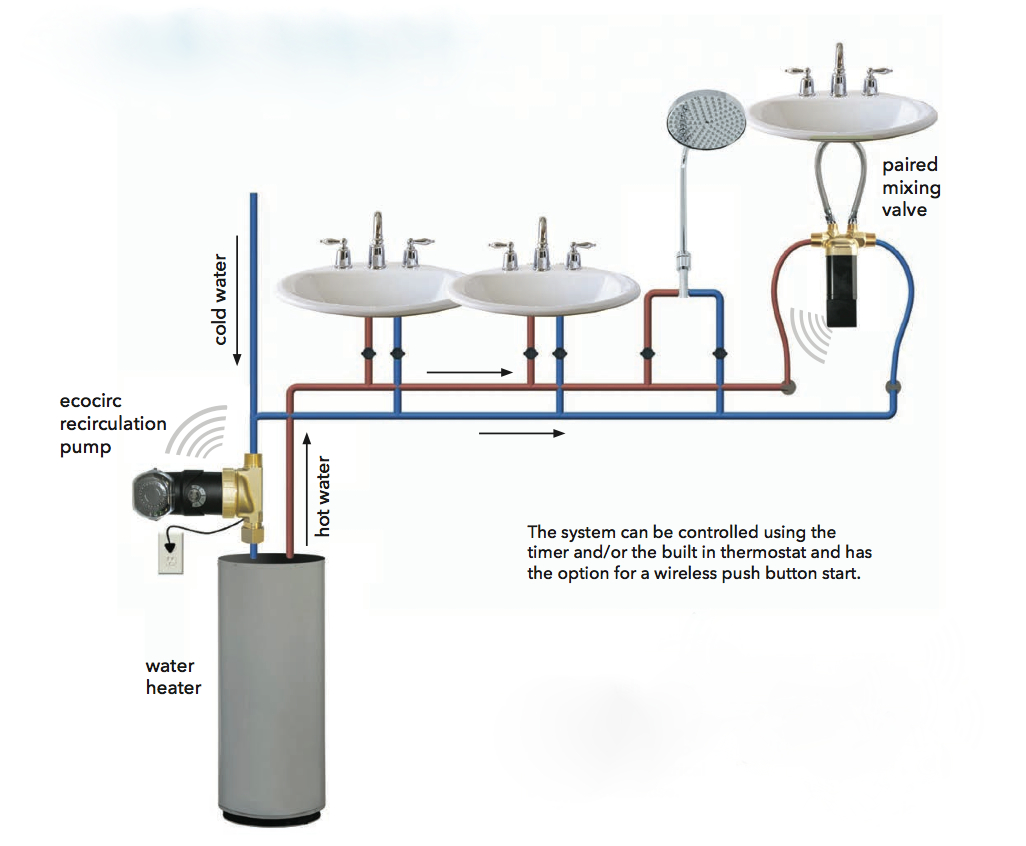Domestic Hot Water Recirculation Part 5: Recirculation WITHOUT a Return Line
/By Chad Edmondson
Not every domestic hot water recirculation system requires a return line. For residential and light commercial applications, there is another way to save water and maintain hot water at the last fixture. It involves connecting a specially designed recirculation pump to the hot and cold water supply lines at the very last fixture – right beneath the sink.
This fairly new introduction pump plugs directly into a 110/120V wall outlet and is connected to both the hot and cold water supply lines. Inside the pump there is a temperature sensor and a set point control that allows the user to set the desired hot water outlet temperature and a differential. When the pump senses that the hot water temperature has dropped beneath the differential threshold, it activates the pump.
The pump is connected to both the hot and cold water supply lines beneath the sink and has connections that link it to hot and cold water outlets of the sink. If the hot water supply temperature drop too low, the pump will redirect just enough of the hot supply water into the cold water supply line – basically bypassing the hot water outlet and routing water into the cold water supply until the hot water is back up to temp.
This isn’t just a point-of-use-solution, although it works well as one. This approach actually maintains hot water to all the fixtures, while using very little energy (as little as 14 watts).
A Wireless Option
What if you don’t have an outlet under the sink and don’t want to go to the trouble of installing the wiring for one? The same technology described above is also available in a wireless configuration that puts the pump at the water heater and a battery operated mixing valve under the sink.
The desired hot water temperature at the mixing valve is set remotely with a thermostat dial on the pump, which is located at the water heater. A signal is sent to the pump to begin circulating hot water throughout the system. The valve tempers the cold water at the faucet / tap, providing instant hot water. When the set temperature is reached, a signal is sent to turn off the pump. This prevents continuous pump operation, thus saving energy. The pump can also be set on timer-based operation to allow it to run only during periods of high hot water demand.
Either of these solutions represents a quick fix for households or small commercial applications where maintaining hot water temperature at the last fixture has been a problem. Because it does not involve the installation of a return line, it is especially well suited for retrofits.
Stay tuned, and in the meantime check out our previous blogs on this topic and our video:
Domestic Hot Water Recirculation Part 1: What’s The Point?
Domestic Hot Water Recirculation Part 2: Where ASHRAE 90.1 Conflicts with OSHA
Domestic Hot Water Recirculation Part 3: The Role of the Recirculation Pump
Domestic Hot Water Recirculation Part 4: Pump Sizing Example




